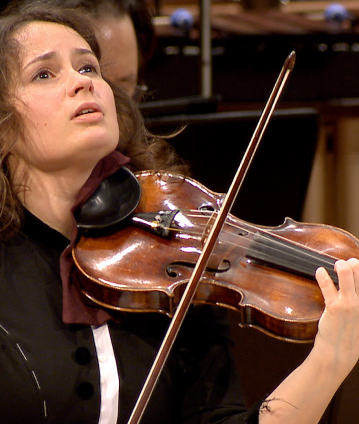Interview
Patricia Kopatchinskaïa en conversation avec Paolo Mendes Simon Rattle et Patricia Kopatchinskaïa

Ce concert dirigé par Sir Simon Rattle culmine avec la Symphonie n° 4 de Gustav Mahler, dont l’atmosphère souriante et ensoleillée fait figure d’exception dans l’œuvre monumentale du compositeur. Elle est précédée par la création mondiale de la pièce Gruß-Moment 2 – in memoriam Pierre Boulez de Wolfgang Rihm et par le Concerto pour violon de György Ligeti, une page complexe et ludique que la soliste Patricia Kopatchinskaïa couronne d’une cadence débordante d’humour et de surprises.
Berliner Philharmoniker
Sir Simon Rattle
Patricia Kopatchinskaïa
Camilla Tilling
© 2017 Berlin Phil Media GmbH
Interviews liées au concert
Artistes
Nos suggestions
- Concert d’anniversaire pour Peter Eötvös
- Kirill Petrenko et Patricia Kopatchinskaïa dans Hartmann et Stravinsky
- Kirill Petrenko et Patricia Kopatchinskaïa
- « Late Night » avec Patricia Kopatchinskaïa
- Simon Rattle dirige la Deuxième de Mahler
- Simon Rattle dirige Beethoven et Mendelssohn à la Waldbühne